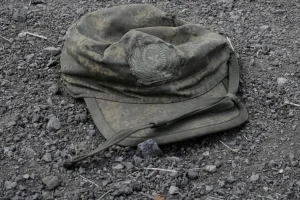
We anticipate more systematic strikes on Russian airfields - military expert Zgurets
Strikes on Russian airfields definitely contribute to reducing Russia’s military potential.
American platform Palantir had found Bin Laden, and now helps Ukraine
The Pentagon says that Russia’s war against Ukraine is the most technological war on Ukraine’s side. The Pentagon granted the Ukrainian Armed Forces access to the Palantir digital combat platform. This information is now public. Palantir is considered the most advanced real-time intelligence and combat control system. Initially, this system was developed by order of the CIA after the events of September 11, 2001, and helped to track Bin Laden. Now it is actively used by the US Army. One of the program’s supporters since 2018 is the Chairman of the Joint Chiefs of Staff Mark Milley. Palantir allows the US Army and allies to share information from various sources: from commercial satellite imagery to the most secret intelligence data received by Western countries. Now the Armed Forces of Ukraine have limited access to this system and have used it in Kharkiv and Kherson regions and continue to use it now.
The peculiarity of the system is that you can access any area of the territory up to 0.5 m2 in real-time. You can find out the goals and determine the location of your own and enemy forces, the best ways to destroy enemy targets. The system is being improved, and the war in Ukraine is used by both the US and the AFU to advance to a technological level of warfare. It should compensate for Russia’s advantage in personnel numbers.
Knowing where the enemy is and what they are planning is important, but then you need the forces and means to destroy them. This is where tanks, artillery and other weapons systems needed by the Ukrainian army come to the fore again.
Russian losses
On December 25, it was extremely restless in the Kursk region, Russia. Explosions were heard near Khalino airfield, used by Russian forces as a base for their fighter aircraft since February 24. The distance from the airfield to the Ukrainian border is about 115 km. And Khalino belongs to the kind of airfields that are located near the border and where attack forces are regularly accumulated. Strikes on such airfields significantly reduce the enemy's potential. So far, there is no detailed information on the strikes’ consequences, but, of course, the Ukrainian side will not take responsibility for what has happened at the Russian airfields. However, it is important that consequences follow. We are expecting more systematic strikes on Russian airfields.
This is not the only good news, because the other day, near Zabaryne, Kherson region, the Russian headquarters, holding an officers meeting of the Southern Military District of the Russian Armed Forces, was struck. Up to 70 enemy servicemen were injured, the number of dead is being clarified. This is good news because losing military leadership is the most vulnerable point for Russia due to the lack of officers. Now there are even fewer of them.
Ukraine's problems in transitioning to Western tanks
Retired Lieutenant Colonel Mykola Salamakha says that the main problem after receiving Leopard, Abrams, or some other Western tanks is the repair work. Training of crew members takes 3 to 4 weeks at most. There are some peculiarities, other ways of firing, sights, crew composition, but such problems are resolved within a month. However, there is another problem. Western tanks require much more thorough maintenance than we used to do with Soviet and post-Soviet tanks. It is also a transition to other repair standards. We have several armored repair plants in Ukraine that are capable of repairing T-64BV, T-72AV and T-72M tanks, M1 tanks and all the modifications that we receive from the former Warsaw Bloc countries. This is what we are used to, we have experience in it and we do it very quickly. Moreover, NATO countries, which used to be members of the Warsaw Pact, provide substantial assistance and repair Soviet equipment and the one that was in their service at their bases. But when it comes to Abrams or Leopard, no European country can repair Abrams, and it takes at least 6 months for us to master all the subtleties. Even Poland, having received Abrams, trained its crews in the United States. Next is the training of personnel who will maintain and repair the vehicles. Poland is not ready to fully operate Abrams tanks. We do not have enough time to master the intricacies of their use and repair. We do not have 3 or 4 months to master the repair and operation of Leopard, even if we apply Polish experience. Therefore, we will follow the way chosen by the Armed Forces and allies. We will continue to receive T-72s that are modified in the Czech Republic.
Russian T-90 tanks
Russia has less than 100 T-90MS tanks, which it has been able to manufacture over the past 3 years. It takes almost 18 months to produce such a tank. About 4 years ago, Russia laid the first serial T-90M production. They showed 10 such vehicles 2.5 years ago at the May 9 parade. Among the tankmen and those who closely follow the topic, there were doubts about whether a commander really had panoramic observation and sighting devices or whether these were dummies. As it turned out, they were dummies indeed. Later, Russia was able to produce about 60, perhaps 70 vehicles over the past 2 years and to put actual panoramas instead of dummies. Subsequently, they now have about 70 to 80 T-90M tanks at most. Taking into account that Ukrainian forces have taken at least 2 tanks as trophies and destroyed at least 4 tanks, then Russia can use 70 vehicles to make noise in the information space and intimidate the average person that it has tanks that have no analogs, but in reality, these are only 2 tank battalions that can participate in hostilities. It should be borne in mind that Russia does not have enough means to fight or frighten anyone with those T-90M or anything else. Just recall 10 enemy BMP-Ts, which we have not heard about or seen for the last 3 months.
- News














































